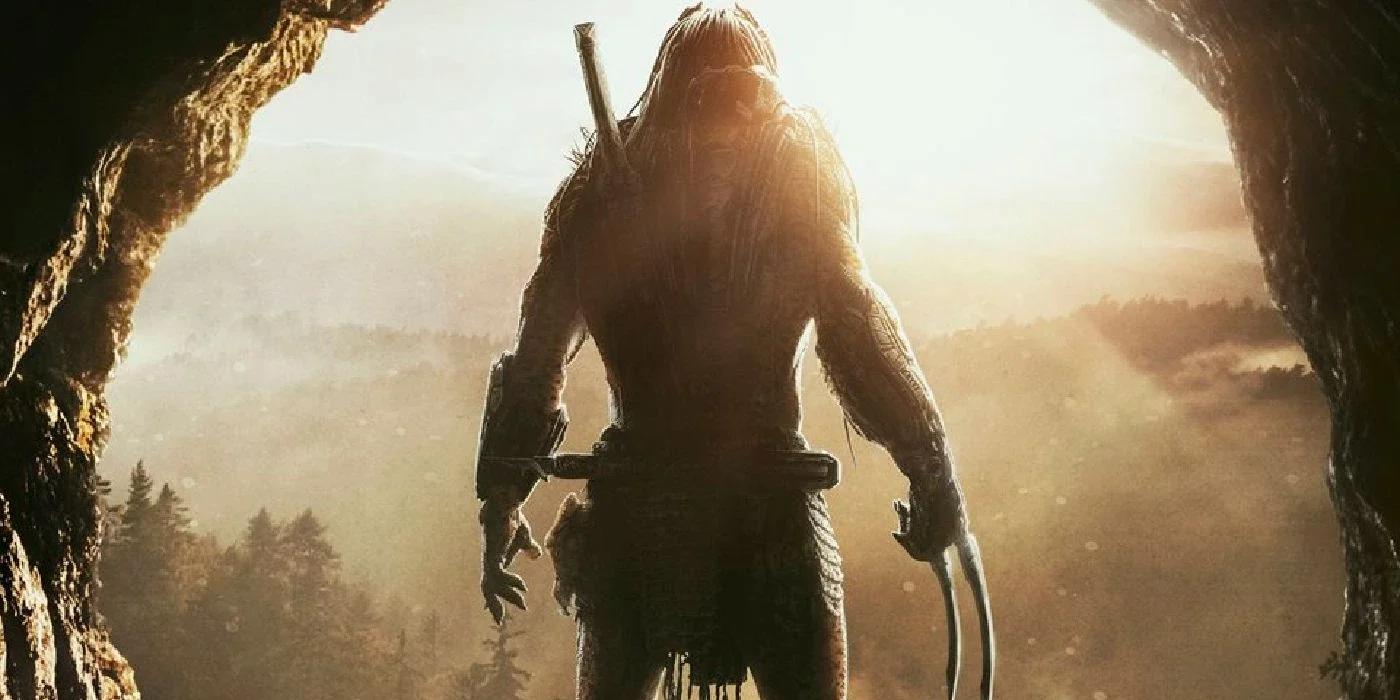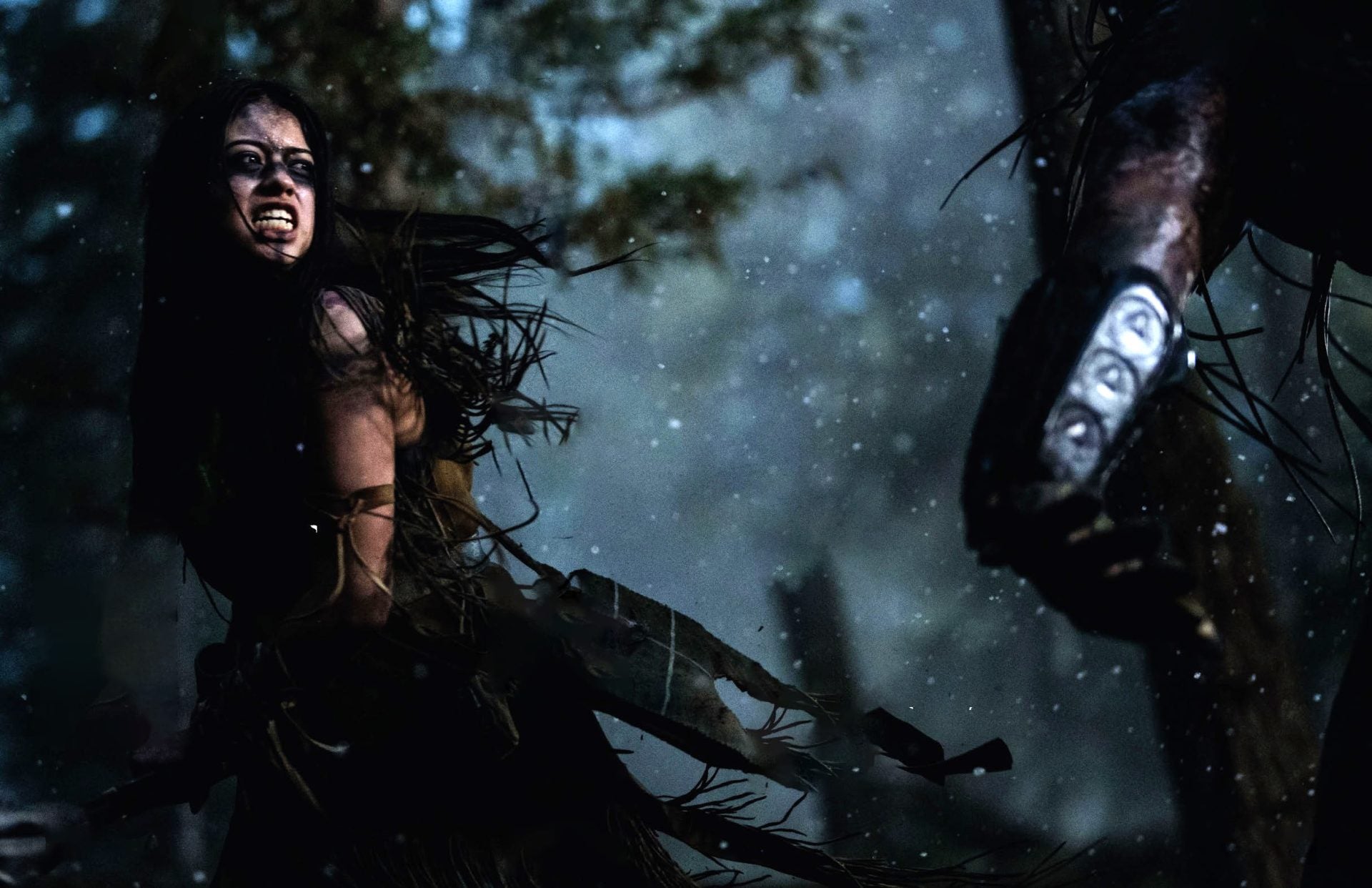In 1963, Time magazine reported that the “Helicopter War” in South Vietnam against guerilla forces was running into trouble, as the tactics used by communist forces there had evolved to be more lethal against the technologically superior United States and our partner, the Republic of Vietnam. In fact, such tactics caused a helicopter to limp back to base with an arrow fired from a bow in its fuselage.
The plot of Disney’s new movie Prey, which came out Aug. 5 and stars Amber Midthunder as a female Comanche warrior named Naru who battles the futuristic alien Predator from the Predator series, doesn’t seem so farfetched in comparison.
Prey, streaming now on Hulu and Disney+, is a film about asymmetric warfare, where, to paraphrase the words of historian Conrad Crane which have been echoed by Lt. Gen. H.R. McMaster and others, Naru has two choices on how to fight: stupidly or asymmetrically. Naru is the only character in the film who makes the smart decision, proving herself to be the apex predator. (This essay contains some spoilers, both about the film and the outcome of counterinsurgency campaigns in general.)
The Predator series, which began with the 1987 classic starring Arnold Schwarzenegger, Carl Weathers, and Jesse Ventura has consistently pitted modern soldiers (or police officers, such as in Predator 2) against the ultramodern alien species, occupying the middle ground between action movie and horror flick. Prey takes this theme even further, pitting a 1719 Comanche tribe against the same threat, in an outstanding movie that has already gotten rave reviews.

Prey is a film about resistance, not just to outsiders and technology, but also issues such as sexism (one of the Comanche tribesmen when Midthunder’s character joins their hunting party makes a sexist joke on “how they don’t need a cook”) and colonialist exploitation (such as the French explorers who skin bison in much the same way the Predator skins its prey). Naru, the main character of the film, defeats her enemies by using her knowledge of hunting, the land, and the arrogance of those who disregard her because of her size and gender.
Everyone, from her fellow tribesmen to French settlers and even the iconic monster itself all have advantages on paper that Naru should not be able to overcome. But each falls victim to hubris, as overconfidence in their own strength leads them to defeat. And it is their belief in strength — not realizing that the keys to success are intelligence, planning, and the exploitation of the environment and the methods of your opponent — that proves fatal.
The Predator itself takes multiple opportunities to revel in its own prowess in battle, disregarding Naru as her fellow tribesmen do when they refuse to believe her claims of an unknown threat being present in the area. They even attack and gaslight her for daring to go against the wishes of her brother, the chieftain (a situation that women often face in real life).
Considering recent events such as the American withdrawal from Afghanistan after more than 20 years of conflict there, and the ongoing war in Ukraine, the context of the film also takes on a new meaning with respect to its story of technology and power versus such virtues as knowledge and fighting resolve.
In Vietnam, American military and political leaders fell victim to hubris too, disparaging the North Vietnamese Army and Viet Cong’s will to fight, while not acknowledging the sheer courage it took to go against the most modern weaponry and technology the world had ever seen at the time with weapons that were hundreds, if not thousands of years old.
In Afghanistan, the United States spent five years in the Korengal Valley fighting the locals there with some of the finest troops the nation had ever fielded, before eventually giving up and retreating in strategic defeat after the realization that the people there would never submit to outsiders, and after multiple examples of the local citizens using knowledge of the terrain to their advantage to attack coalition forces.
In Iraq, the United States chose to antagonize the very people who knew the land, the key players, and weaknesses that could be exploited, and who quickly turned that knowledge against the coalition.

In Ukraine, many observers, along with Russia’s military leaders, believed that the country would quickly be vanquished — something that has, thus far, not come to pass. Almost six months later the Ukrainian people continue to display their will to resist. The historical examples stretch back millennia — illustrations of the failures of strength and power to win the day. Technological overmatch does not always ensure victory if one’s enemy continues to fight — and no amount of firepower, technological superiority, or strategy will make up for a lack of such fighting resolve, either.
In the end, Naru in Prey becomes the ultimate hunter because of these intangible factors that resourceful warriors at a disadvantage always fall upon. At the climax of the film, Naru baits the Predator — which had up to this point been depicted as an ultra-intelligent hunter-killer — into a trap, knowing he would give in to his baser instincts and focus on the fight and the hunt while disregarding her. Using the terrain and the weaknesses of the Alien’s technology to her advantage, Naru lures the alien to a piece of ground where she had almost met her doom earlier in the story: A literal quagmire where the Predator becomes trapped by its weight and equipment, as she turns his own tools and advantages against him.
Sound familiar?
+++
Daniel Johnson is a former infantry officer and journalist who served with the United States Army in Iraq, and recently completed his MA through the Hussman School of Journalism and Media at UNC–Chapel Hill where he will return in the fall as a 1st year PhD Student. He is the author of #Inherent Resolve, a book on his unit’s experience in the war against ISIS.
